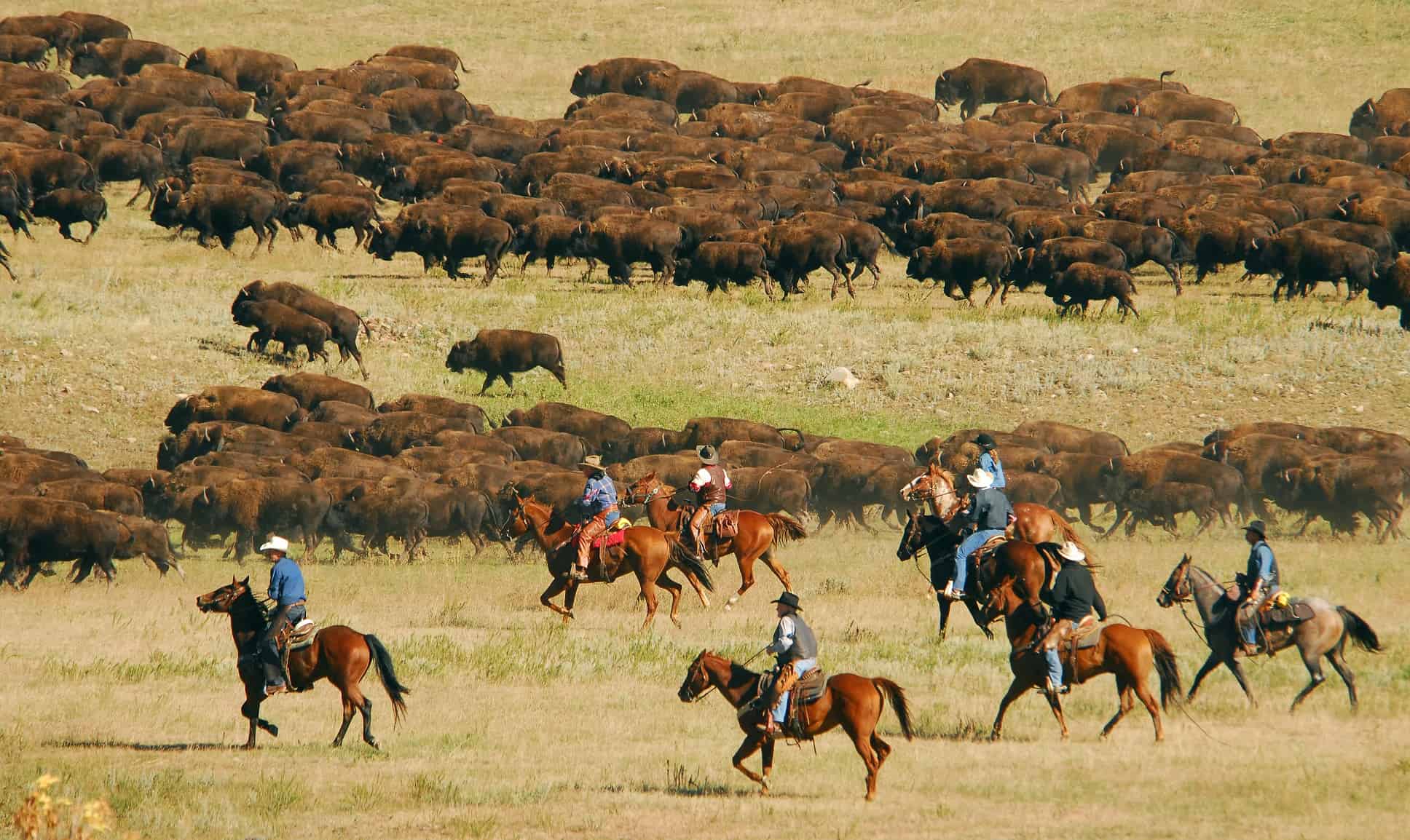 PhotosSouth Dakota Department Of Tourism
PhotosSouth Dakota Department Of Tourism
There really is no place like South Dakota. Nestled between North Dakota and Nebraska, the state has been home to historic figures, explorers, pioneers and authors. It also boasts rolling prairies, moody badlands and expansive farmlands. Here are some highlights.
Lewis & Clark
In the early 19th century, Thomas Jefferson commissioned Meriwether Lewis and William Clark to travel through Louisiana to the Pacific Ocean and investigate trade opportunities. They travelled between 1804 and 1806; today you can follow in their footsteps along the Lewis and Clark Trail tracing their route along the Missouri River.
Historic sites along the way include Calumet Bluff, where the interpretive centre describes their encounters with the Yanton Sioux; Running Water, another place they met with the Yankton; and Spirit Mound.

Spirit Mound, near Vermillion, is one of the few places where you can stand in nearly the same spot as the explorers. In Clark’s journals, he wrote that the Native American population in the area believed there to be “little devils” residing on top of what is known today as Spirit Mound. Intrigued by this legend, Lewis and Clark, along with many of their men, left their camp on the south bank of the Missouri River near the mouth of White Stone Creek to investigate. Upon reaching the summit of Spirit Mound, Lewis and Clark found not little devils, but rather, “a most beautiful landscape; Numerous herds of buffalo were seen feeding in various direction; the Plain to the North N.W. and N.E. extends without interruption as far as can be seen” (DeVoto 1997, 24).

A Little House & The Prairies
Laura Ingalls Wilder, a woman who charmed the world with her stories of life on the prairie was actually born in the woods of Wisconsin on February 7, 1867. Her family moved across the prairie, making stops in Iowa, Minnesota and Kansas, before finally settling in De Smet, South Dakota, in 1879.
Wilder began writing the Little House series in 1932 when her daughter, Rose Wilder Lane encouraged her to tell the tales and memories of life on the frontier. By the early 1950s, Wilder’s stories were being read worldwide. Initially Laura recorded the stories as an autobiographical manuscript, but a publisher picked up the composition after Laura and Rose reworked it into a children’s book and soon the Little House on the Prairie series was a top seller around the world. The series contains eight books, five of which have settings in De Smet.
De Smet is still that “Little Town on the Prairie” where visitors can experience a unique journey filled with history about the Wilders’ life on the prairie. The Ingalls Homestead still stands, and visitors can also enjoy a live outdoor theatre production each July from the “Little House” books.

Wild, Wild West
For more than 80 years, the historic town of Deadwood has played host to one of South Dakota’s great events – the Days of ‘76 festival, celebrating the town’s first pioneers. In 1876, the gold-filled Dakota Territory was invaded by those seeking their fortune overnight. Most didn’t find their fortune, but they did find a home in this revived Old West mining town.
The annual five-day event is one of South Dakota’s biggest rodeos with steer roping, timed events, rodeo slack, barrel racing, and other rodeo events. In addition to the rodeo, there is a Days of ‘76 parade on two days of the event.
Made famous by Wild Bill Hickok and Calamity Jane, Deadwood operates 86 gaming halls, 3,000 slot machines and 90 gaming tables. Free concerts keep non-gambling folks entertained. Or you can head to the Days of ’76 Museum to see horse-drawn wagons, stage coaches, carriages, clothing, memorabilia and archives that have been generated by the celebration.

Custer State Park, located in the Black Hills is the second largest state park in the U.S., and home to one of the world’s largest publicly-owned bison herds, with 1,300 bison roaming almost 28,700 hectares. The annual Custer State Park Buffalo Roundup is one of the grandest events at the park. It’s a weekend filled with Old West entertainment and heart-pounding adventure as cowboys and cowgirls round up the herd. Thousands of spectators take in this mandatory park management event each September.
Monumental Men
The huge granite sculpture, Mount Rushmore National Memorial, west of Keystone, honours four former presidents – George Washington, Thomas Jefferson, Abraham Lincoln and Theodore Roosevelt. The man behind the monument was John Gutzon Borglum.
Before coming to South Dakota in 1925, Borglum studied art around the world and was commissioned to carve Stone Mountain in Georgia into the likeness of Confederate Gen. Robert E. Lee. After preliminary work, Borglum left that task and went to South Dakota to work on the Mount Rushmore mountain carving.
The monument, in the heart of the Black Hills was dedicated in 1927 by President Calvin Coolidge – and it took 14 years to sculpt.
Just minutes from Mount Rushmore, you can see an artwork in progress at Crazy Horse Memorial, the world’s largest mountain carving, and a tribute to the leader who defeated Custer at Little Big Horn.
Crazy Horse was recognized among his people as not only a legendary warrior, but also a leader committed to preserving the traditions and values of the Lakota way of life. Today he is still a sacred figure to modern Native Americans.
In 1939 Chief Standing Bear asked Polish sculptor Korczak Ziolkowski to develop a memorial to the spirit of the Sioux Nation and its great leader Crazy Horse. Ziolkowski was 40 when accepted the commission after the Second World War, and with only $174 to his name, he lived in a tent in the wilderness during the first seven months he worked on the Memorial.
Crazy Horse Memorial was dedicated in 1948, and work on the mountain continues today.
For more information, visit the website at www.travelsd.com.


